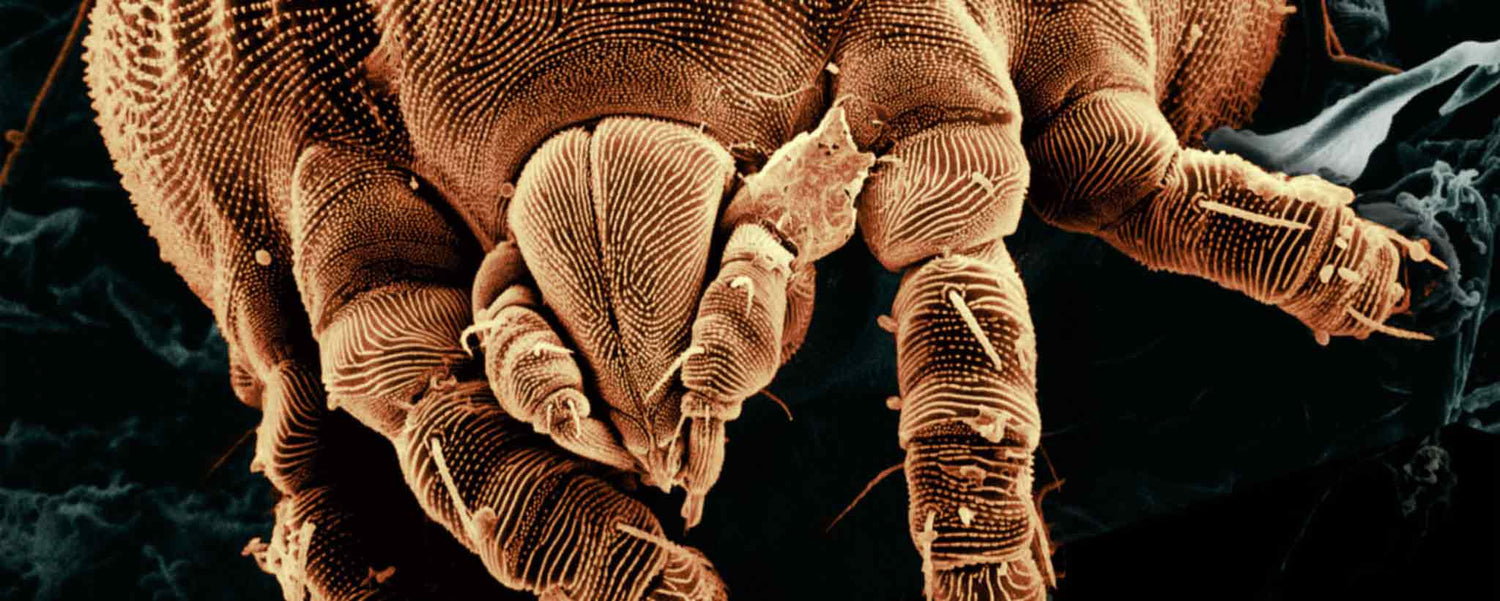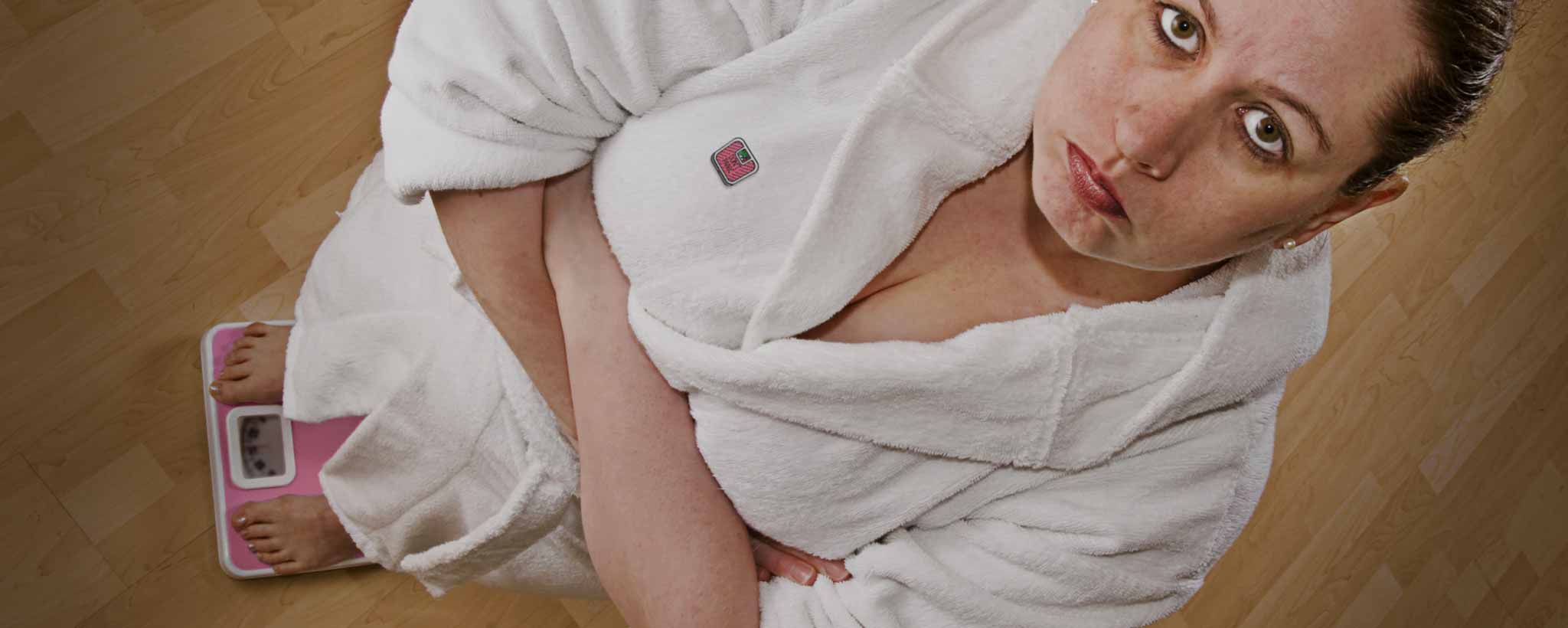Everyone eventually gets them as the immune system weakens.
Alarmed By Your Dermal Parasites?
Flaky eyebrows are more than an annoyance. If you wear eyeglasses, the particles impair vision through your lenses. They may also cover your desk and keyboard. Most people assume it is dandruff, but something more insidious can be involved. Your eyebrows, beard, and, try not to be alarmed, your entire face may be covered with parasites and their waste.
With passing decades, these face and body mites proliferate to thousands of different—mostly harmless—species. Though we are not born with them, everyone eventually gets them as the immune system weakens from aging, antibiotics, opioids, immunosuppressive drugs, or HIV.
The popular translucent Demodex mites can be found with their heads lodged near sebaceous glands. Your eyebrows may bug you, but Demodex is not limited to eyebrows.
According to dermatologist Shilpi Khetarpal, MD, “Over a thousand species of bacteria live on the surface of our skin.” The rich oily sebum of the eyelids, nose, cheeks, forehead, chin, and ears are ideal breeding ground for Demodex.
The eight-legged larvae hatch after 3–4 days, and the larvae develop into ectoparasitic adults in about 7 days. The total lifespan of a nocturnal Demodex mite is several weeks. Dead mites decompose inside hair follicles or sebaceous glands, leaving their excrement behind. Larvae can appear similar to lice, but there are notable differences as they mature.
Demodex Development

Compare Demodex to Lice
| Characteristics | Demodex | Lice |
|---|---|---|
| About | Demodex are among the smallest of arthropods (spiders) with two species Demodex folliculorum and Demodex brevis, typically found on humans. | Lice belong to Phylum Arthopoda and Class Insecta, and Order Mallophaga (chewing lice) or Order Phthiraptera (sucking lice). |
| Legs | 8 | 6 |
| Feeding | Lacking anuses, Demodex feed on dead skin cells, attaching themselves to hosts primarily for reproduction. | Feed on the blood of hosts. |
| Habitat | Demodex, a genus of tiny parasitic mites that live in or near hair follicles of mammals. | Chewing lice feed on mammals (except humans) and birds. Sucking lice are found in humans and mainly thrive by sucking blood from the scalp or pubic area. They spread through common clothes, combs, and other bedding. |
| Life Span | Several weeks, or about 15 days, without a host. | About 30 days or 2 days without a host. |
| Diseases | Correlated with dryness, itching, pustules, and rosacea. | Lice are associated with Rickettsial diseases. |
Infestation, called demodicosis, can be symptomless. Hypersensitivity may result in dryness, itching, pustules, and rosacea. Demodex has been implicated in causing folliculitis and androgenetic alopecia. No causal link has been proven, meaning it is just as likely that the mites get attracted by the inflammatory conditions rather than cause them.

Parasites also feed on dead cells. The average person sheds a gram and a half of keratinocytes (dead skin cells) per day. Visually speaking, that’s roughly 3/8 of a teaspoon. Wash bedding in hot water weekly to prevent buildup of bed-thriving parasites.
Stop Scratching The Surface—Fight Back
Demodex can only live within human hair follicles. Because they lodge mostly below the skin surface, scratching does little to eradicate them. At the very least, this may scrape away dead skin cells along with a few Demodex beneath your nails. At worst, scratching can embed the critters further down and inflame the skin.
Depending on the location, squeezing skin may expel excess sebum with larvae and putrid waste. Pressure can also press Demodex further into follicles.
After shaving, apply antiseptic aftershave lotion, as the name implies. Discard disposable razors that collect hair, dead skin cells, and Demodex.
It is best to minimize excessive facial oil. When kept under control, demodicosis is barely noticeable. To reduce the chance of mite proliferation, preventive measures are suggested:
- Cleanse face twice daily with a non-soap cleanser like Neutrogena cleansing bar.
- Avoid oil-based cleansers and greasy makeup.
- Exfoliate periodically to remove dead skin cells.
- Do not share headwear and cosmetics.
People are more inclined to shampoo their scalp (where Demodex may also reside) than exfoliate their eyebrows. Following clinical manifestations (itching, flaking, etc.), mites may be temporarily eradicated with topical insecticides, especially crotamiton cream or permethrin cream (lice treatment). Topical or systemic metronidazole can show some efficacy. In severe cases, such as those with HIV infection, oral ivermectin may be recommended.
Probiotic creams contain live cultures of good bacteria. Prebiotics contain ingredients that accelerate the growth of the helpful germs that already live on your skin. Clay masks theoretically draw toxins from dead mites out of your skin. It is doubtful that this eradicates Demodex.
Whether you have a proliferation or not, there is good reason to wash your face twice a day, shampoo your scalp twice a week, wash bedding weekly, and vacuum mattresses and furniture frequently. Wise mothers teach children to wash their faces and brush their teeth before going to bed. With or without Demodex, you can be A Bit More Healthy by following good hygiene.
To support the writing of scholarly articles about dermatology, ClinicalPosters sells human anatomy charts, scientific posters, and other products online. You may sponsor specific articles, become a ClinicalNovellas Member, or remit a small donation.
ClinicalPosters sells human anatomy charts, scientific posters, and other products online to offset expense of the writing useful articles about dermatology. Slide extra posters into DeuPair Frames without removing from the wall.
Show your support by donating, shopping for ClinicalPins, becoming a ClinicalNovellas Member, or leaving an encouraging comment to keep the research going.
To support the writing of useful articles about dermatology, ClinicalPosters sells human anatomy charts, scientific posters, and other products online. You may sponsor specific articles or remit a small donation.
ClinicalPosters sells human anatomy charts, scientific posters, and other products online to offset expense of the writing useful articles about dermatology. Slide extra posters into DeuPair Frames without removing from the wall.
ClinicalPosters sells human anatomy charts, scientific posters, and other products online. You may remit a small donation or become a ClinicalNovellas Member.
You can support the writing of useful articles about dermatology by sponsoring specific articles, becoming a ClinicalNovellas Member, or remitting a small donation. Visible content is optimized for device size.







 Romance & Health Intertwine. Fall in love with a captivating romance miniseries that explores the essence of well-being. Become a ClinicalNovellas member for heartwarming tales.
Romance & Health Intertwine. Fall in love with a captivating romance miniseries that explores the essence of well-being. Become a ClinicalNovellas member for heartwarming tales.





